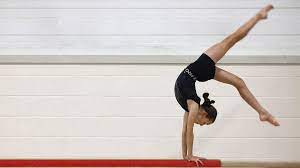Gymnastics for kids stands apart from other sports by building complete physical literacy, strong mental discipline, and unmatched body awareness—all from a young age. While team sports like soccer, netball or AFL focus on group dynamics and game performance, gymnastics offers a child-centred path to strength, flexibility, and confidence, without the pressure of a scoreboard.
This article explores how gymnastics compares to other popular sports for kids and why it might be the best long-term investment in their development.
What Makes Gymnastics for Kids So Unique?
Unlike many sports that emphasise gameplay or scoring goals, gymnastics for kids prioritises body movement mastery. From basic tumbling to balance beam work, children gain control over every muscle group.
Key differences include:
- Individual progress: Kids advance at their own pace rather than matching a team’s performance.
- All-body development: Arms, core, legs, and posture are strengthened equally.
- Early foundational skills: Many gymnasts start before age 5, which supports strong developmental milestones.
Other sports often introduce tactics or team formations early, which may not suit every child’s learning style.
How Does Gymnastics Improve Physical Development?
Gymnastics is known for producing incredibly well-rounded athletes—even at entry level. Children who take part consistently gain:
- Balance and coordination – Crucial for everyday movement and later sport transitions.
- Core strength – Supports posture and reduces injury risk across all physical activities.
- Flexibility – Built through warm-ups and routines, preventing muscle strain.
- Endurance and discipline – Developed through repetition and training progression.
Compare that to football, where leg strength and speed are prioritised, or tennis, which leans heavily on hand-eye coordination. Gymnastics demands all of the above—and more.
Does Gymnastics Help Kids Mentally Too?
Yes. Mental strength is a standout benefit of gymnastics for kids. Each session teaches children to:
- Follow multi-step instructions
- Practise until progress happens
- Handle fear, such as flipping or going upside down
- Perform under quiet observation—not just loud cheering
According to research on childhood development, learning in structured, goal-oriented environments builds resilience and attention control—key academic traits. In contrast, some kids find team sports mentally overwhelming or socially draining if they’re not naturally extroverted.
Is Gymnastics Safer Than Contact Sports?
While all physical activity carries some risk, gymnastics tends to be lower-risk than high-contact team sports. Children learn to fall safely, build body awareness, and progress incrementally under supervision.
In contrast:
- AFL and rugby involve tackles, bumps, and unpredictable physical contact.
- Netball and basketball can result in ankle and wrist injuries due to fast stops and landings.
Most gymnastics centres also invest in padded flooring, foam pits, and highly trained coaches who spot children during difficult skills—lowering injury rates even further.
Who Benefits Most from Gymnastics?
One of gymnastics’ biggest strengths is how adaptable it is. Kids who are naturally energetic, quiet, introverted, or physically gifted can all thrive.
This sport suits:
- Children with high energy who need structured movement
- Cautious kids who build confidence slowly
- Creative minds who love performance-based routines
- Focused learners who enjoy repetition and goal tracking
It also supports Cialdini’s principle of consistency: once kids experience small wins and praise, they’re more likely to keep returning—creating powerful habits over time.
Does Gymnastics Help in Other Sports Later?
Absolutely. Many elite athletes—from AFL players to divers and dancers—started in gymnastics. That’s because it develops base skills that translate easily:
- Jump height and landing technique for basketball and athletics
- Core and limb strength for martial arts or dance
- Flexibility and spatial awareness for swimming, diving or ice skating
Team sport coaches often praise former gymnasts for their discipline, posture, and physical confidence—even if they switch sports by age 10.
How Does Gymnastics Build Confidence?
Gymnastics teaches kids to try, fail, and try again—all in front of a coach or class. Over time, this normalises challenge, builds emotional regulation, and reinforces that growth comes through effort.
Unlike team sports where players may be “benched” or overlooked, gymnasts are seen and supported every session. They measure their success by achieving personal goals—like nailing a cartwheel or learning a backbend—not by winning games.
This creates a self-reinforcing cycle of motivation and improvement.
Frequently Asked Questions
Is gymnastics too structured for young kids?
No. Most beginner programs use games and creative movement to introduce skills gently, especially for ages 3 to 5.
Can boys do gymnastics too?
Definitely. Boys benefit greatly from gymnastics, especially for strength, agility and body awareness. Many Olympic male athletes start this way.
How do I know if gymnastics is right for my child?
If your child enjoys moving, climbing, jumping, or showing off silly tricks at home—they’ll likely thrive in a gymnastics environment.
Conclusion: Why Choose Gymnastics Over Other Kids’ Sports?
While every sport offers value, gymnastics for kids delivers a rare mix of physical, emotional, and cognitive development. It’s a sport for all personality types, with benefits that outlast childhood. From building grit to strengthening growing muscles, gymnastics isn’t just training kids for competition—it’s preparing them for life.
If you’re exploring options that offer similar long-term value, structured children’s sports classes can also support your child’s confidence and physical growth.
For expert-backed insights on early physical development, visit the Raising Children Network – one of Australia’s most trusted parenting resources.

